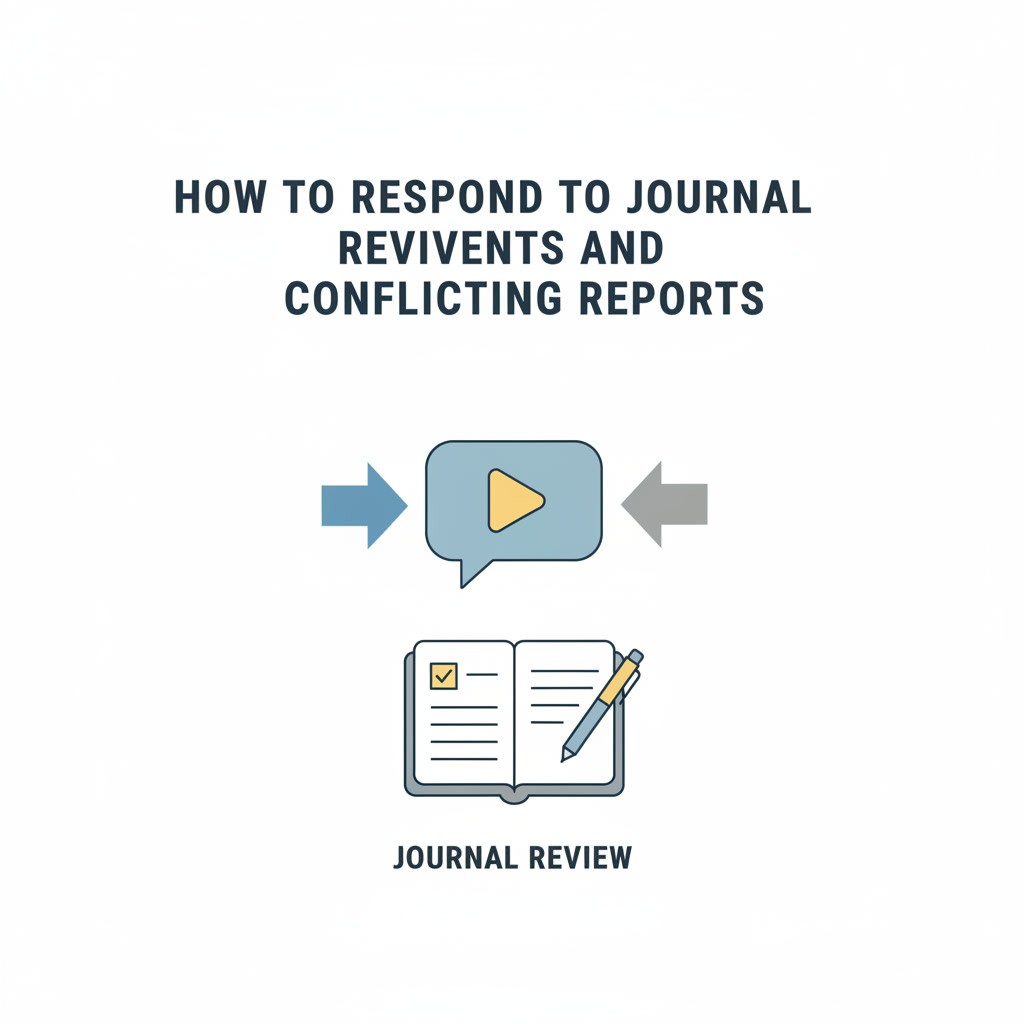How to Do Research for a Research Paper: From Topic to Sources
Starting a research paper can feel overwhelming when you are unsure how to begin. This guide shows you how to do research for a paper before you start writing, so you can build a strong foundation of credible sources. If you are looking instead for guidance on analysing and synthesising sources, see our step-by-step literature review guide.
Example: Using thesify to Test the Research Process
To show how digital tools can support each step of research, a member of the thesify team uploaded an old undergrad sociology report originally written in 2014 on a potential research topic of interest.
The draft was uploaded to thesify as if it were a scientific paper. From there, thesify generated a Paper Digest that broke the draft into a summary, keywords, main claims, and even possible research opportunities.
This example runs throughout the post to illustrate how thesify can make each stage of research more efficient and structured.
Step 1: Plan Your Search Strategy
Choosing the right research paper topic and setting a clear research strategy is the foundation of your work. Begin by narrowing a broad subject into a focused research question that you can realistically investigate. If you need help with this step, see our guide on how to refine your research question.
Ask yourself these questions before you move further:
What is the scope of this topic, too broad, too narrow, or workable?
Who is the intended audience, and what level of depth is expected?
Do I have access to the data, sources, or materials needed?
Is this feasible within my timeline?
How should I start research so that it leads to a clear question?

Example from a real student’s research paper
Broad subject: Effects of marijuana legalization
Narrowed topic: The persistence of Colorado’s marijuana black market after legalization
Research question: How does the legalization of marijuana in Colorado affect the resilience of black-market sales and the social networks that sustain them?
This kind of progression shows how you can move from a vast subject like drug policy to a question that connects theory (Rao’s model of hot causes and cool mobilization) with a specific case.
For guidance on shaping your question into a central argument, see how to develop a strong thesis statement. To understand how this early planning connects with the overall paper, review the structure of a research paper.
Step 2: Find the Gap and Frame Your Research Question
Once you have a focused topic, the next step is to identify the research gap—the part of the discussion that existing studies have not fully addressed. Locating this gap allows you to refine your topic into a clear research question that will guide your searching. For more on this process, see our guide on how to strengthen your research question.
Building on the earlier example of marijuana legalization, the research gap in this paper focuses on what has not been addressed—such as how black-market sales adapt after legalization.
Broad topic: Legalization of marijuana
Focused topic: The persistence of Colorado’s marijuana black market after legalization
Research question: How does the legalization of marijuana in Colorado affect the resilience of black-market sales and the social networks that sustain them?
Ask yourself these questions to locate the gap:
What connections exist between different studies on this issue?
Are there emerging trends or patterns in theory, methods, or results?
What themes or questions keep reappearing across the literature?
Are there debates or contradictions in findings?
What are the pivotal or foundational publications?
Most importantly: what has not been done yet?
By identifying what others have overlooked, you turn a narrowed topic into a purposeful research question that anchors your strategy and sets the direction for your paper.
Using thesify to Refine Your Research Question
One way to check whether your research question is focused enough is to test it with thesify. For this post, we used a real 2014 undergraduate sociology paper (on Colorado’s marijuana black market) to illustrate. When uploaded to thesify as a “scientific paper,” the Paper Digest highlighted possible research opportunities such as pricing strategies, leadership roles, and identity formation in drug networks.

This shows how students can upload an early draft or even a rough topic write-up into thesify and instantly see which research directions or questions might be worth pursuing.
Step 3: Break Down the Research Question into Key Concepts
With a clear question in place, the next step is to extract the key concepts that will guide your search. These concepts form the building blocks of your search strings and help you generate effective research terms for research papers and databases.
Example concepts from the same student paper
Marijuana legalization
Black-market sales
Social networks and community identity
Adaptation after policy change
Tip: If your question involves a population and an intervention (for example, “adult users” as the population and “marijuana legalization” as the intervention), separate those out clearly. This makes it easier to translate your keywords for research papers into frameworks such as PICO later on.
Using thesify to Generate Search Keywords for Research Papers
At this stage, you can upload a short draft or write-up of your topic into thesify as if it were a scientific paper. The tool automatically generates a list of keywords and concepts based on your writing, which you can then use to build search strings.
In the same 2014 sociology paper example, thesify’s Paper Digest automatically pulled these key concepts:

This shows how thesify can turn even a rough draft into a structured keyword list, helping you move quickly from a broad research idea to effective search terms for databases.
Step 4: Develop a Keyword Strategy for Database Searching
Once you have identified your concepts, the next step is to design a keyword strategy that will let you search systematically across multiple databases. For each concept, collect related terms, synonyms, and variations so you can build flexible search terms that capture different ways authors might describe the same idea. Keeping a running list in a spreadsheet will make it easier to track what works and what does not as you refine your searches.
Build Synonyms and Variations
To expand your search options, brainstorm synonyms and keyword variations for each of your core concepts. This ensures you do not miss studies that use slightly different terminology.
Marijuana legalization → cannabis regulation, recreational cannabis, decriminalization
Black market → illicit trade, underground economy, illegal sales
Colorado → U.S. state-level policy, Denver, Rocky Mountain region
Social movements → activism, rebellion, counterculture, resistance networks
Search for Exact Phrases
Use quotation marks to search for phrases as they appear in text.
Example:
"black market marijuana"(retrieves results with those words together, in that order).
Apply Boolean Operators
Boolean operators help you combine or exclude terms to expand or narrow your search.
ANDnarrows: marijuana AND Colorado AND "black market"ORexpands: marijuana OR cannabis OR potNOTexcludes: marijuana NOT hempUse parentheses to group terms: (marijuana OR cannabis) AND (community OR "social network")
Use Truncation and Wildcards
Databases often allow symbols to broaden or adapt search terms.
Truncation ( * ) retrieves all word forms:
Truncation: use symbols (often *) to find all forms of a word.
Example:
mobil*returns mobilize, mobilization, mobilising.illicit*→ illicit, illicitly, illicitness
Wildcards ( ? ) capture slight variations:
Wildcard search: use symbols (often ? or !) to allow small spelling changes.
colo?r→ color, colour (helpful if comparing U.S./U.K. spelling in broader contexts).Example:
wom?nreturns woman and women.
These techniques let you build structured search strings that you can test and refine. For more on advanced operators, see our section on Advanced Search Strategies for Efficient Literature Reviews.
Step 5: Define Your Research Question Using Frameworks
Frameworks help you turn a clear topic into a structured question that databases and readers can more easily interpret. The PICO framework (Population, Intervention, Comparison, Outcome) and the SPIDER framework (Sample, Phenomenon of Interest, Design, Evaluation, Research type) are two widely used research frameworks, each suited to different disciplines.
PICO framework (common in health and clinical fields):
Population
Intervention
Comparison
Outcome
Example: Population: adults in Colorado; Intervention: marijuana legalization; Comparison: pre-legalization vs. post-legalization; Outcome: resilience of black-market sales.
SPIDER framework (common in social sciences and qualitative studies):
Sample
Phenomenon of Interest
Design
Evaluation
Research type
Example: Sample: Colorado marijuana users; Phenomenon of Interest: persistence of black-market networks; Design: interviews or ethnographic study; Evaluation: perceptions of community identity; Research type: qualitative.
These frameworks do not replace your research question, but they give it sharper edges, making it easier to design searches and decide on methods. To help you get started, use thesify’s Notion template for PICO and SPIDER frameworks. You can duplicate it and adapt it to your own research question.
Step 6: Choose the Best Databases for Research Papers
Selecting the right databases for research papers ensures you are drawing on credible and peer-reviewed sources. Each field has core scholarly databases that give you reliable coverage. For more detail, see the section on Recommended Databases and Search Strategies from our annotated bibliography guide.
Commonly used databases include:
Google Scholar – broad, free access to scholarly content.
PubMed – health, medicine, and biological sciences.
ScienceDirect – scientific and technical journal articles.
JSTOR – humanities and social sciences, including historical studies.
OpenGrey – grey literature (unpublished or non-commercial research).
Tip: If your institution has a library catalogue, it often includes subscription journals and interlibrary loan services, giving you access to material you cannot find freely online.
Step 7: Apply Advanced Search Techniques and Filters
Once you have built your keyword sets, synonyms, and Boolean logic, the next step is to run efficient searches and refine the results without losing valuable material. An advanced search is not just typing words into Google Scholar. It is a structured process that moves from broad to precise.
How to apply advanced search techniques:
Run a broad query using your keyword sets
Start with the core combination of your concepts using Boolean operators.
Example:
"marijuana legalization" AND "Colorado" AND "black market"
Apply search filters
Use database filters to refine by year (e.g., post-2010 studies), document type (peer-reviewed articles, systematic reviews), language, or availability. Apply these filters only after you first capture the broad field.
Skim titles and abstracts, save promising items
Review abstracts quickly to see whether they address your research question. Export useful results into a citation manager or a simple spreadsheet.
Adjust terms and rerun
Swap in synonyms, keyword variations, truncation, or wildcards to expand your reach.
"illicit marijuana" OR "illegal cannabis"illicit*(captures illicit, illicitly)(Colorado OR "U.S. state") AND ("black market" OR "underground economy")
Pro Tip: Always test whether your filters are excluding too much. If results seem too narrow, remove one filter or broaden a search term before rerunning.
For more on advanced operators, see our literature review search strategies guide.
Step 8: Evaluate and Organise Sources for Your Paper
Once you have gathered articles, books, and reports, the next step is to evaluate sources for credibility and usefulness. Strong research requires selecting peer-reviewed and reliable materials while also keeping track of why you saved them. To avoid confusion later, note how each source contributes to your research question and where you might cite it.
Expert Tips:
Keep notes on why each source was saved and how it supports your argument.
Use tools like citation managers or simple spreadsheets to organise sources systematically.
Read thesify’s guide on how to evaluate academic papers.
Using thesify’s Paper Digest to Evaluate Research Sources
One way to evaluate sources more efficiently is by using thesify’s Paper Digest. Instead of skimming through pages of text, thesify automatically breaks a paper into a summary, keywords, main claims, methods, and conclusions. This helps you quickly judge credibility markers, see whether the article connects to your research question, and decide how it fits into your argument.
Step 1: Browse related publications
Under the Resources tab, thesify suggests a list of credible publications related to your topic. Here you’ll see a list of peer-reviewed articles linked to your topic. This feature reduces the risk of relying on weak or irrelevant studies while saving time on database searches.
To illustrate, we also tested thesify with a peer-reviewed article (separate from the student example). This shows how the tool works with both real published research and early student drafts.

Step 2: Check if Theo’s Digest is available
If the article is open access, you’ll see a green Theo’s Digest button. Clicking it generates a structured digest immediately.

Step 3: Upload for a full digest
If no digest is available, upload the article (or even your own draft) into thesify as a “Scientific Paper.” The tool will then generate a structured digest that includes a summary, keywords, main claims, methods, and conclusions.
Below is an example of thesify’s structured digest of a peer-reviewed article. Instead of reading pages of dense text, you can quickly check whether the methods are rigorous and whether the findings align with your topic.

This workflow makes it easier to compare papers side by side, identify weak publications, and expand your reading list with credible sources. Whether you upload a published article or your own draft, thesify’s Paper Digest highlights credibility markers, shows connections to your research question, and helps you decide if the study is worth citing.
How to Spot Predatory Journals
Predatory journals often misrepresent their publishing practices. Use this quick checklist to verify journal credibility:
Check for sloppy website design, vague policies, or grammar errors.
Look for membership in DOAJ, COPE, OASPA, or STM.
Verify physical address and professional contact information.
Confirm editorial board members are real academics with affiliations.
Watch out for “peer review” promised in just a few days.
Skim past issues to see if topics and citations look credible.
Pro tip: When in doubt, search the journal name + “predatory” or use the tool Think. Check. Submit. for guidance.
Using Reference Managers
A citation manager helps you stay organised and makes referencing easier later. We’ve compiled thesify’s top 10 reliable free citation management tools, however, three of the most widely used tools are:
Zotero – free, open-source, excellent for collaboration.
Mendeley – simple interface with strong PDF annotation features.
EndNote – advanced, feature-rich, widely used in academic institutions.
For more on documenting your sources, see our guides on how to write an annotated bibliography and our collection of free citation guides.
Pro tip: Keep a spreadsheet of your search history (databases used, keywords, combinations that worked) or try a visual tool like ResearchRabbit to map connections between papers.
Stay Up to Date with Alerts
Set up alerts in Google Scholar or your preferred databases to get notified when new papers appear in your field. Subscribing to journals can also help you track the latest research and avoid missing key studies while you are writing. You can also explore how researchers are using AI to gain new perspectives on academic writing, since AI tools increasingly complement traditional alerts and help uncover emerging trends faster.
Frequently Asked Questions
What are the first steps in doing research for a paper?
Start by narrowing your topic, framing a focused research question, and outlining your initial search terms.
How do I find credible sources for a research paper?
Use scholarly databases, read abstracts before downloading, and check journal reputation and peer-review claims.
Which tools help manage sources for a research paper?
Zotero and Mendeley help you collect, tag, and cite sources while you write.
What is the best way to organise sources for a research paper?
Keep notes on why each source is relevant, use a citation manager, and maintain a running list of your references.
What search operators should I use for better results?
Use quotation marks for exact phrases, OR for synonyms, and truncation to capture word variants.
Conclusion: How to Do Research for a Research Paper in 8 Simple Steps
Finding credible sources becomes easier when you follow a structured process. Here’s a quick recap:
Plan your search strategy – narrow your broad subject into a focused research question.
Find the research gap – frame your question around what has not been studied.
Break down the research question – identify the key concepts and research terms.
Develop a keyword strategy – brainstorm synonyms and apply Boolean operators.
Define your question with frameworks – use the PICO framework or SPIDER framework for structure.
Choose the best databases for research papers – rely on scholarly databases like PubMed, JSTOR, or Google Scholar.
Apply advanced search techniques and filters – run queries, refine with filters, and save promising results.
Evaluate and organise sources – check journal credibility, take notes, and use citation managers.
Choose thesify: Turn Your Research Into a Strong Paper
Collecting sources is only the first step. With thesify, you can get structured feedback that checks your argument, evidence, and structure. Upload your draft and see how to transform your research into a polished paper.

Related Posts
How to Tell If an Academic Paper Is Worth Reading, Citing, Sharing, or Publishing: The goal is to focus your intellectual efforts on the papers that truly matter for your work, while avoiding the trap of superficial skimming or blind inclusion of sources. Learn how by integrating thesify’s PaperDigest into your workflow, you can save time during literature review, double-check your comprehension, ensure you’re citing high-quality research, create shareable knowledge bytes, and even refine your own writing.
The Ultimate Collection of Free Citation Guides for Students and Researchers: Finding clear, reliable citation guidance shouldn't require jumping between tabs or second-guessing outdated blog posts. This list brings together the best free citation guides—from official style manuals to university libraries—for APA, MLA, Chicago, and more.
How to Write an Annotated Bibliography: Format, Examples, and Expert Tips: Annotated bibliographies significantly enhance your academic writing by providing clarity, depth, and credibility to your research. Leverage annotated bibliographies to organize sources effectively, critically assess academic discourse, and demonstrate thorough scholarly engagement. Learn how to strengthen academic research with annotated bibliographies in this guide.

















